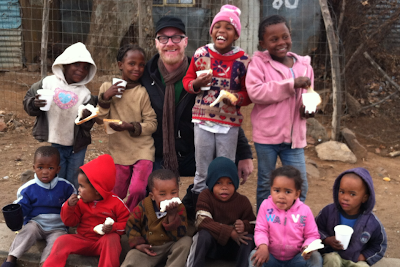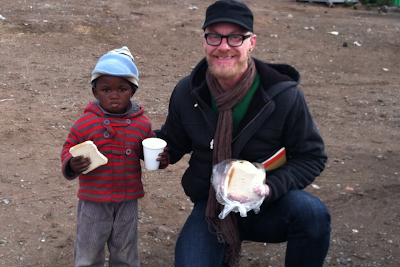Wednesday, August 15, 2012
Soup Kitchen on the go
I've fed food to the hungry before. In fact, it was a part of my daily job function when I worked for Streetwise Houston, a day shelter for homeless adolescents. Every day we had to pick up food from various groceries and restaurants that donated food so we could feed hungry mouths. The food we served was usually breads, pastries, pizza and prepackaged items. We never served hot meals, except for what could be warmed up in the microwave. However, serving hot meals to hungry souls has long been a tradition in the U.S. and around the world. Soup kitchens became commonplace during the great American depression following the stock market crash of 1929. Poor, out-of-work people would line up around the block to receive a cup of soup and some bread in cities and towns all over the U.S. Today soup kitchens in the U.S. are usually located in homeless shelters or temporary housing following weather catastrophes like Hurricane Katrina in 2005.
When Cheryl Pillay, the director of Come Back Mission, told me we would be running a soup kitchen my mind conjured up images of people waiting in a queue outside a building where we would ladel soup into bowls for the hungry. Auntie Cheryl, as she is known to practically everyone in Eldorado Park, a drug-infested, poverty-stricken community just outside the larger, more famous township of Soweto, likes to keep her volunteers on their toes. She rarely preps you for what you are about to experience, choosing to allow you to live the experience and then asking you to reflect afterward. I'm grateful for her strategy. Frankly, nothing she could have said would have prepared me for what I was to experience.
Auntie Cheryl's mother and several other volunteers had spent the morning preparing a large pot of chicken soup in the kitchen of the small house where Come Back Mission is headquartered. The delicious aroma filled the offices and thrift shop contained in the house on Alberta street. Around 2pm, Cheryl asked me to come help her load the soup into the trunk (or "boot" as the South Africans say) of her car. We also loaded it with 10 or so loaves of bread and drove down the road to Kliptown, a large shanty town mixed with small concrete homes, tin-corrugated shacks, burnt-out stores, and even a small, red-brick African Methodist Episcopal (A.M.E.) church. We weren't headed toward any particular church, community center or shelter to dish out the soup. Instead, Cheryl announced as she turned a corner onto a dirt street profusely littered with trash, "This looks like a good place." Her daughters and a few other Come Back Mission volunteers followed in another car and pulled up behind us. She popped open the boot of her car and the soup kitchen was now open.
While other volunteers began ladeling soup into styrofoam cups, I grabbed a loaf of bread and Cheryl hollered, "Come, come," to little boys and girls who had recognized Auntie Cheryl's little blue hatchback when it pulled up. Some of the children brought their own bowls, others came with empty, dirty hands and politely said thank you as they received a cup of soup. I handed each one 2 slices of white bread and their beautiful smiles warmed my heart. It was impossible to hold back my tears as one after another adorable child reached out his hand to receive bread. I greeted each one with a smile really wanting to wrap my arms around them and take them away, if only momentarily, from their world of poverty, hungry, and suffering.
The logo for Come Back Mission contains a human with outstretched arms. I am now that human stretching my arms around God's children. I cannot take them away from the poverty or the filthy living conditions. I cannot clean their dirty clothes or wipe the snot running from their noses. I cannot put shoes on their bare feet or gloves on their cold fingers. But I can put a hot meal in their empty tummies and I can show them that someone cares.
Subscribe to:
Post Comments (Atom)


Posted this to FB to share.
ReplyDelete